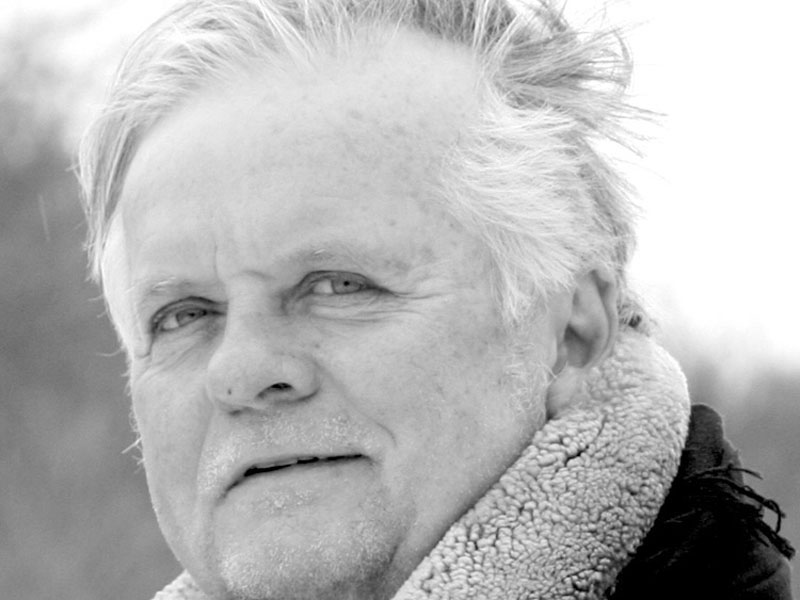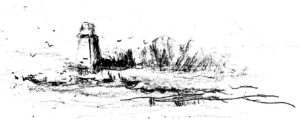Columnists
Where dividing lines end

There is a gentle push of air coming from off-land and escaping to the open water of South Bay. The chatter of waves smacking at the wooden edge of wharf offers rhythm to the voice of the rain-swollen inlet. Resting in the young summer day, False Duck Island drifts on the distant horizon. The spring migration has passed and the nearby buildings used by the Prince Edward Point Bird Observatory are quieted ‘til fall. The lake overlaps a section of dirt road that got me here.
It’s a Sunday afternoon and easy to contrast the new-season buzz of our urban settings with the quietude of getting lost in one of our places of refuge. I’m perched on a decrepit plastic storage tub at the end of a wharf. Across the inlet of Long Point Harbour, high on a wooden drying rack for fishing nets, four gulls are similarly perched. Four large gulls, a quieted harbour and I at land’s end. Or so it seems according to the remnants of the Point Traverse Lighthouse—a house without a light awaiting restoration, one of the few remaining of Prince Edward’s once 45 lighthouses.
 I include myself in this shoreline menagerie because there is nothing of concern more than simply watching bird-like over the water. And the more you do it the more the horizon lines of consciousness blur into vanishing lines. There are no divisions. The mind, forever analyzing, quiets here at lands-end. There is nothing for it to do: no recognitions, comparisons; no inner critic or judge: just everybody at ease to accept that things are simply as perceived through all of the senses. They are what they are. And the lap of the waves erases everything else.
I include myself in this shoreline menagerie because there is nothing of concern more than simply watching bird-like over the water. And the more you do it the more the horizon lines of consciousness blur into vanishing lines. There are no divisions. The mind, forever analyzing, quiets here at lands-end. There is nothing for it to do: no recognitions, comparisons; no inner critic or judge: just everybody at ease to accept that things are simply as perceived through all of the senses. They are what they are. And the lap of the waves erases everything else.
The state of no-mind is easy, a sonnet to onhigh: and we remember these places, these moments. The part of us that knows reminds us for our not wanting to leave.
The breeze carries the sweetness of spring hay and earthy decay of forest and of coastline. Moored at my side is the Lilla, a steelhulled Great Lakes fishing tug. She’s tied at rest, her equipment cleaned and readied for what I imagine to be her usual 4 a.m. run out into deep water, her crew aboard for a catch of yellow perch. It is delectable.
The fishing trawler is a reminder that this harbour is a ghost town. The once many docks were filled with the Point Traverse fishing fleet; the shoreline crowded with small seasonal quarters for families, for crews that hailed from old Loyalist stock. Working hands, neighbours you relied on, for the lake holds its seafaring temperament, an unpredictable ruler you never counted on. It governed lives. It dictated livelihoods.
Over by the boat launch a small red car pulls up. A large man exits and retrieves gear from the trunk. Jim carries two fishing rods and a green tackle box in one hand, a white plastic chair in the other. We exchange greetings on his way past like strangers on an elevator. Jim settles at the end of the dock and, unspeaking, carries on with the business of ‘wetting the line’: a fluorescent red bobber here; a brighter spinner there. Jim turns to me: high water, so the Lilla is docked here because over there the wharf is drowned. Over there on the lost side once lined with cabins for the inshore fleet; if only the lighthouse could speak.
We return to the quietude and I watch how Jim tosses the line then reels it in and how he wonders whether the high water might encourage the fish to come in past the low shoal.
Jim has awoken the interest of the gulls and with now opened wings they hover above his fishing grounds. I ready to leave on the only road in and out of this refuge.
Watch for the road sign next time you’re by this way; the sign that reads ‘end of divided lines’ and you’ll know you are near.
Email lighthouses@ontariohistory.ca for historian Marc Seguin’s upcoming free guided tour of the harbour.

Comments (0)